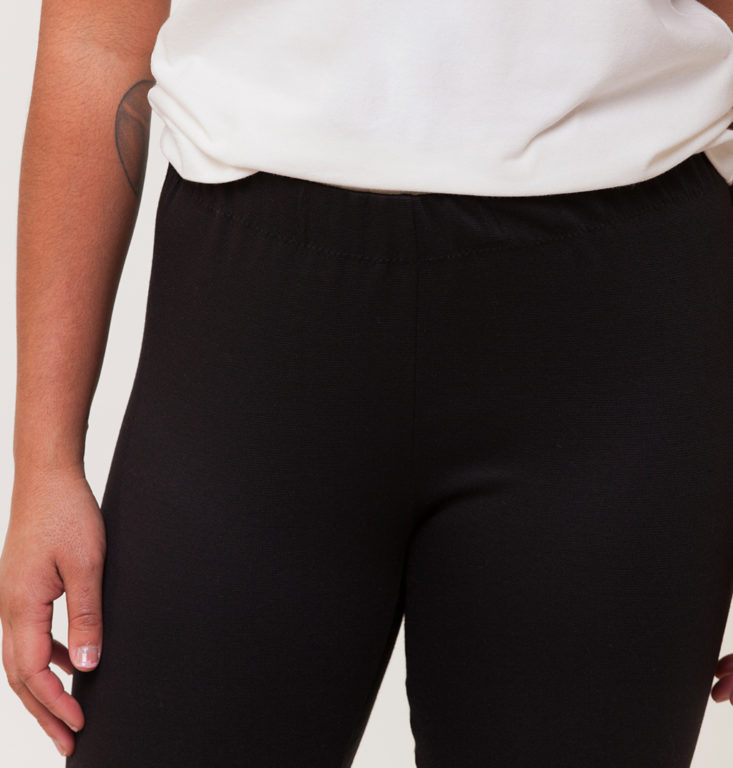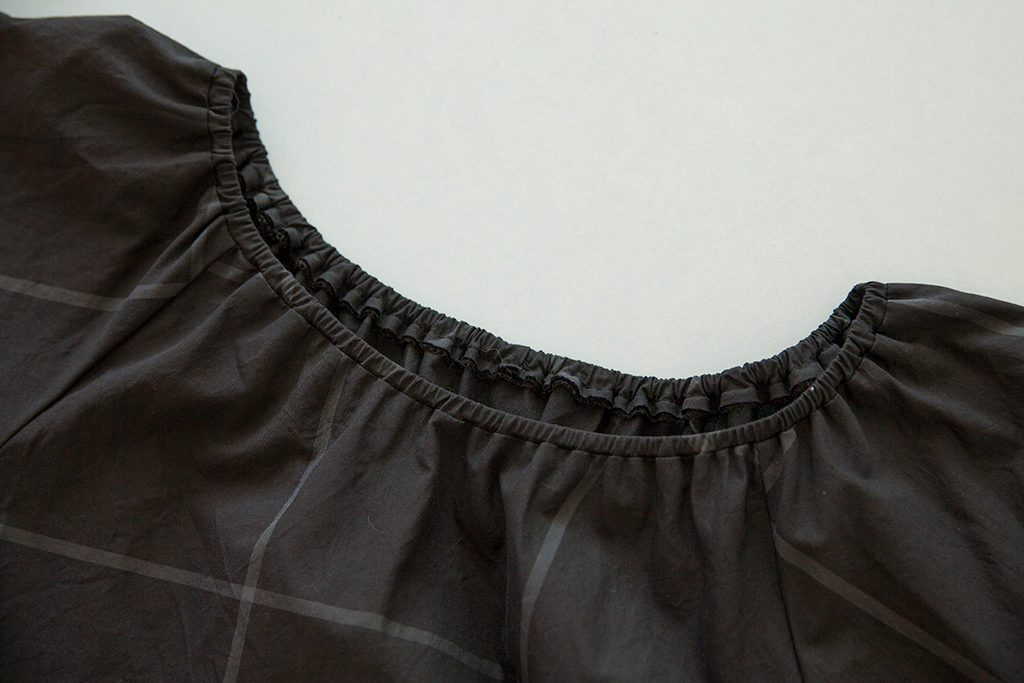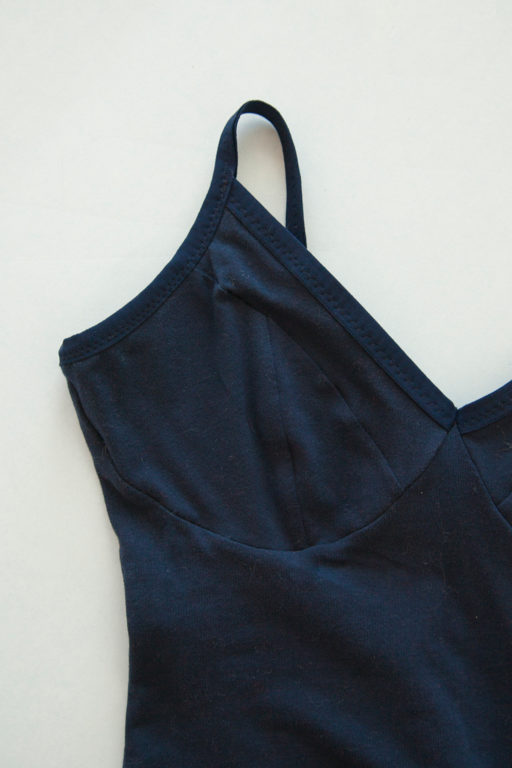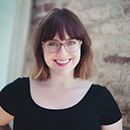We have all been there, staring blankly in the notions aisle trying to determine what kind of elastic to use. Sure, your pattern calls for 1/2” elastic, but should you use knit, braided, woven, or sparkly? The choices can seem endless and daunting.
Fortunately, I have got you covered with the scoop on how different types of elastic behave and the best uses for each variety.
Garment Elastic
This category is reserved for your workhorse elastics. Typically these elastics are not decorative, but come in a wide variety of widths and often can be purchased in either black or white.
Braided Elastic
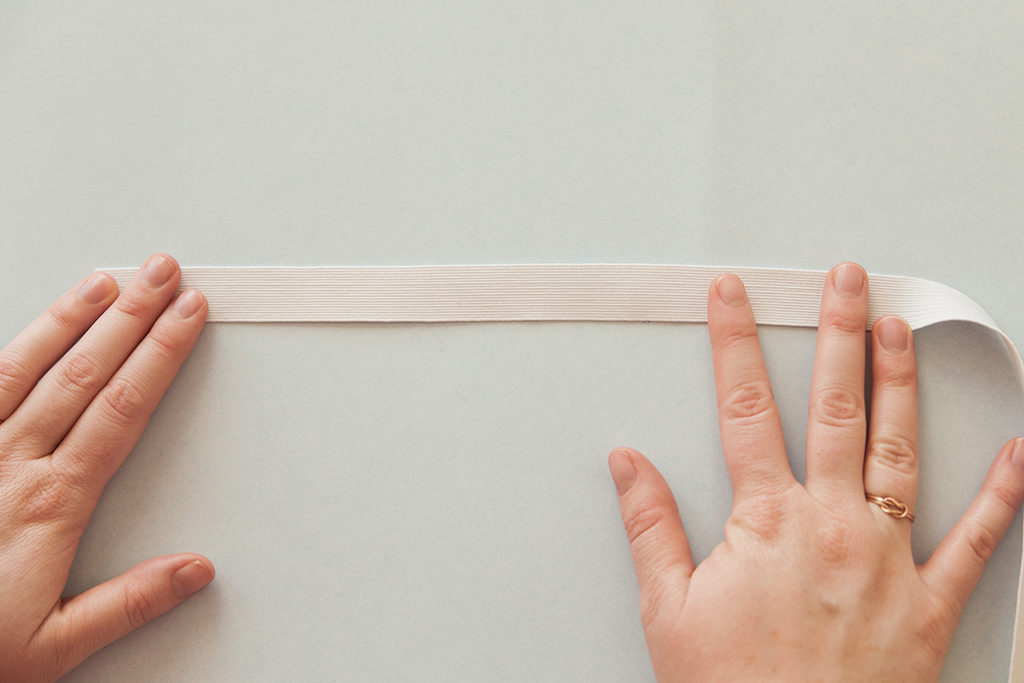
Braided elastic has parallel ribs that run the length of the elastic.
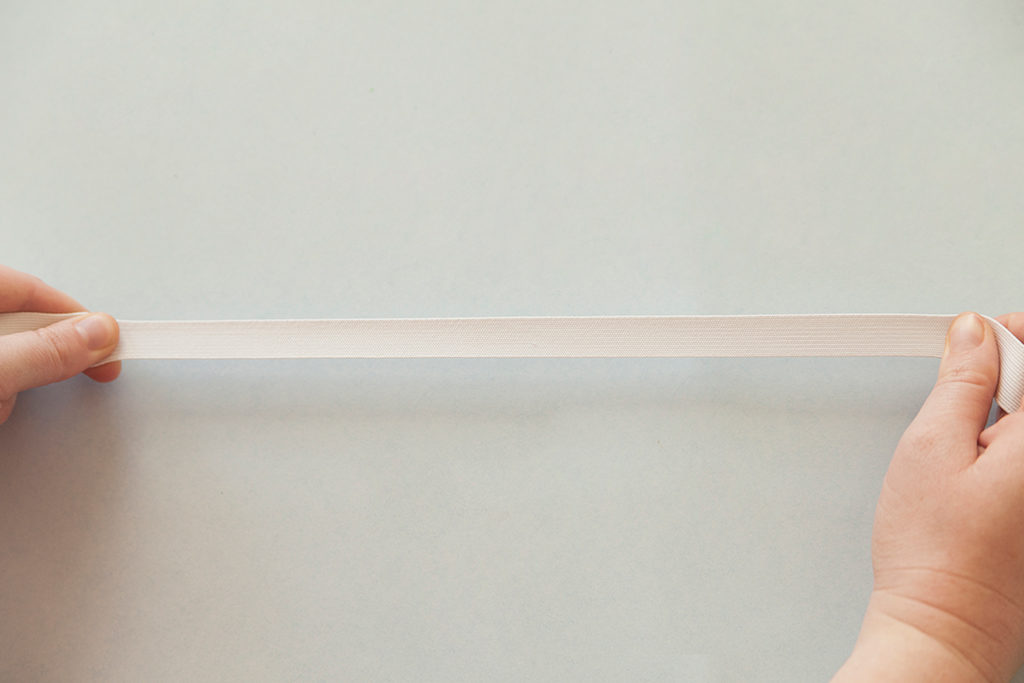
Braided elastic becomes more narrow as it stretches.
Braided elastic has parallel ribs that run the length of the elastic. This type of elastic becomes more narrow as it stretches and loses stretch when it is sewn or pierced with needles and pins. For these reasons, braided elastic is ideal for using in casings, such as waistlines, sleeve hems, or necklines.
Knit elastic
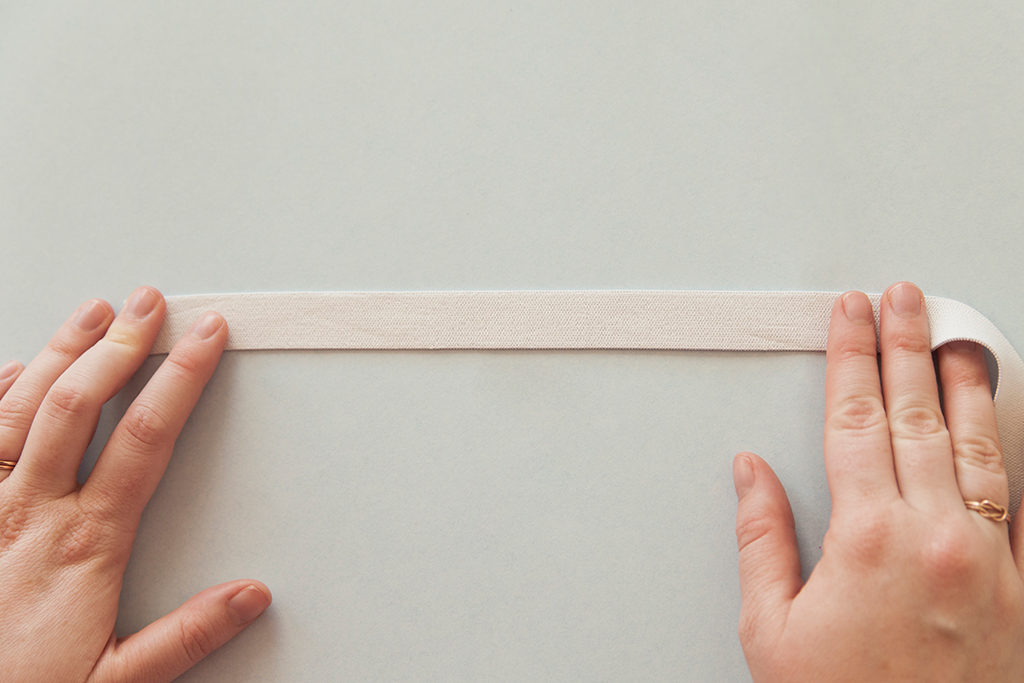
Knit elastic is smooth in appearance.
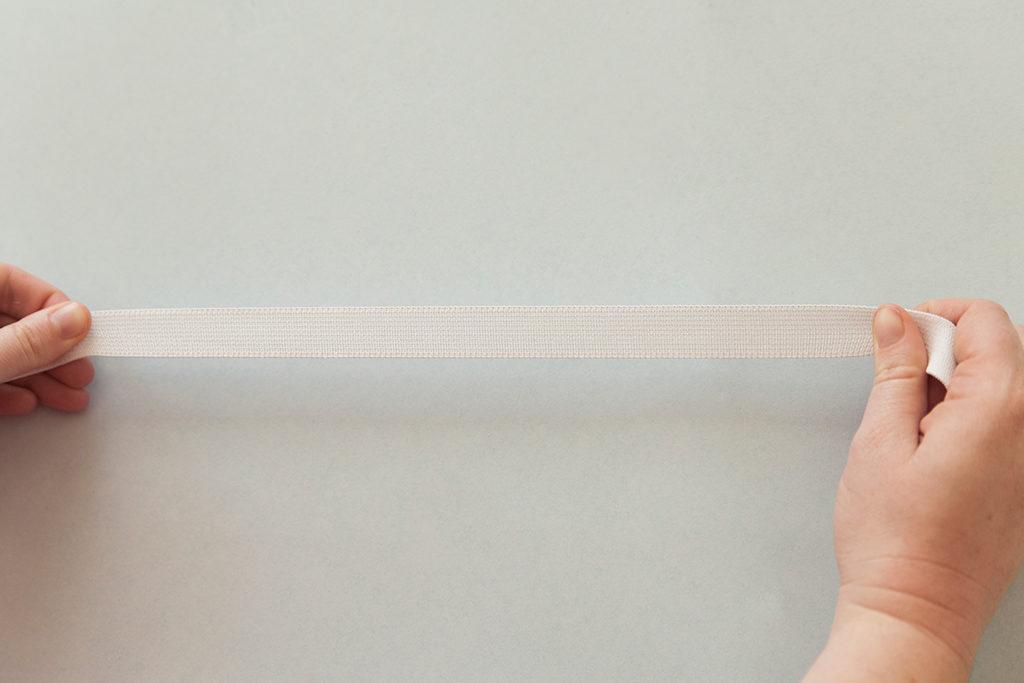
Knit elastic does not become more narrow as it stretches.
Knit elastic has a smooth appearance and is soft against the skin. Knit elastic does not become more narrow as it stretches and does not lose resiliency when sewn. Knit elastic can be used for many purposes and is best for lightweight and medium-weight fabrics.
Woven Elastic
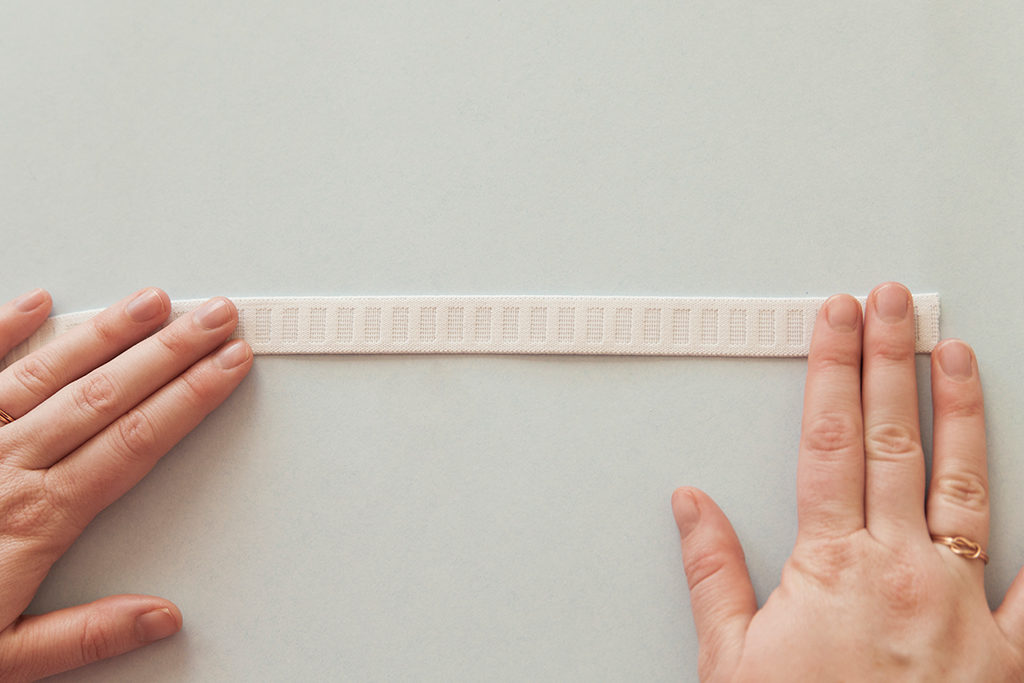
Woven elastic is easily identified by its horizontal and vertical ribs.
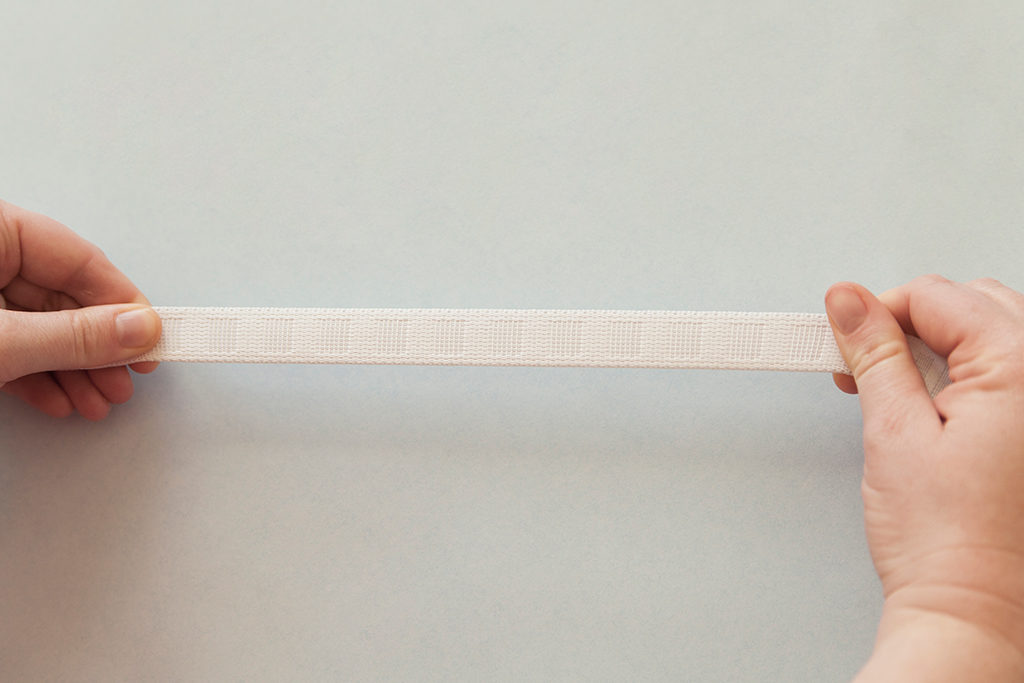
Woven elastic does not become more narrow as it stretches.
Woven elastic—or “no roll”—is the strongest garment elastic. This elastic is easily identified by its horizontal and vertical ribs. This variety of elastic does not become more narrow as it stretches and does not lose resiliency when sewn. Woven elastic is ideal for projects that use heavyweight fabrics, such as outerwear.
Specialty Elastic
This category of elastic includes all of the fancy elastics that are used for specific applications. Many of the elastics included in this category are derivative of braided, knit, or woven elastic.
Clear Elastic
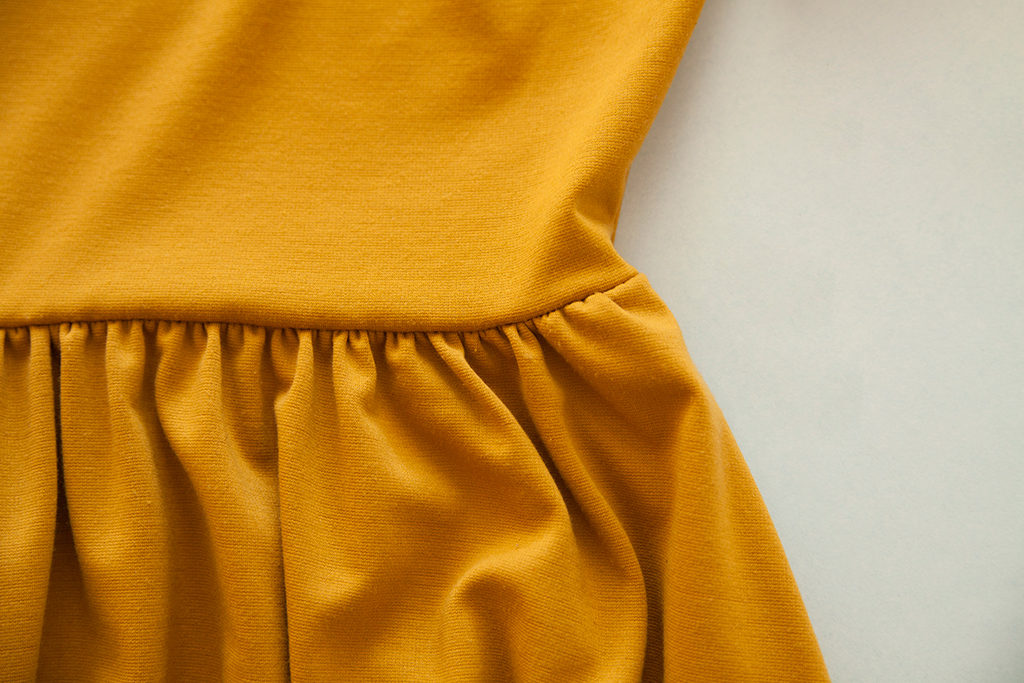
Use clear elastic to create gathers in knit garments.

Clear elastic is a transparent and lightweight type of elastic. Clear elastic can be stretchy, but beware, cheaper varieties of this elastic can easily break or be too firm. This variety of elastic becomes more narrow as it stretches but does not lose resiliency when sewn. Clear elastic is ideal for stabilizing and gathering lightweight and medium-weight knits.
Fold-Over Elastic
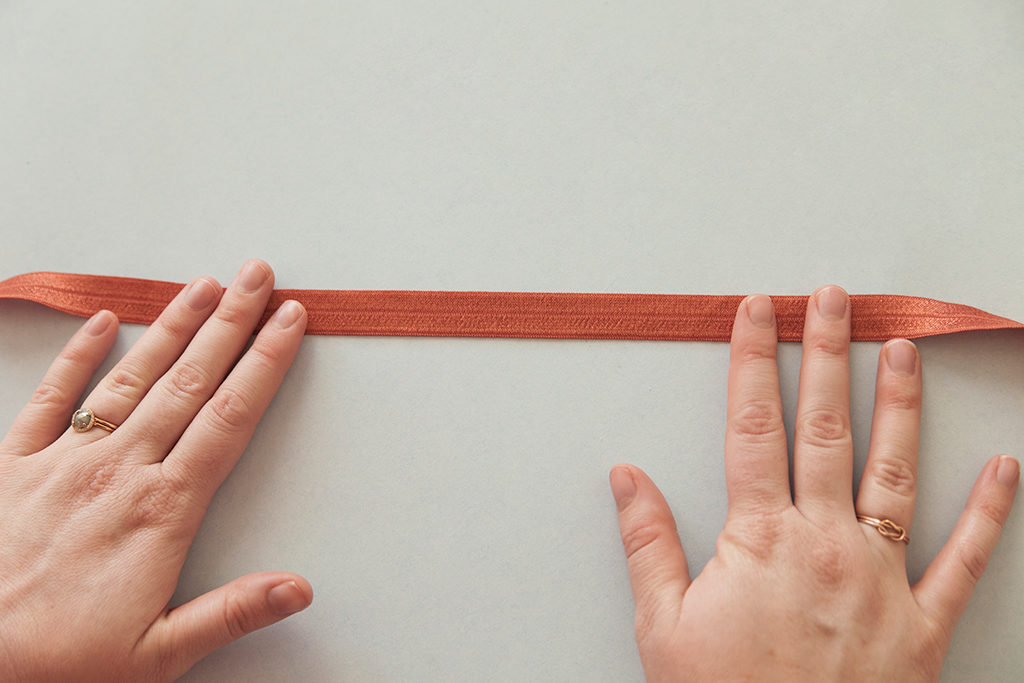
Fold-over elastic—also referred to as FOE—is a decorative elastic that comes in a variety of colors. Fold-over elastic can be identified by a small ridge that runs down the center of the elastic; this allows the elastic to fold in half. This variety of elastic does not become more narrow as it stretches and does not lose resiliency when sewn. Since FOE folds in half, it is perfect for encasing raw edges, making it a popular choice for finishing and adding elasticity to undergarments. In addition to lingerie, FOE can also be used to finish armholes and necklines on knit garments.
Swim Elastic
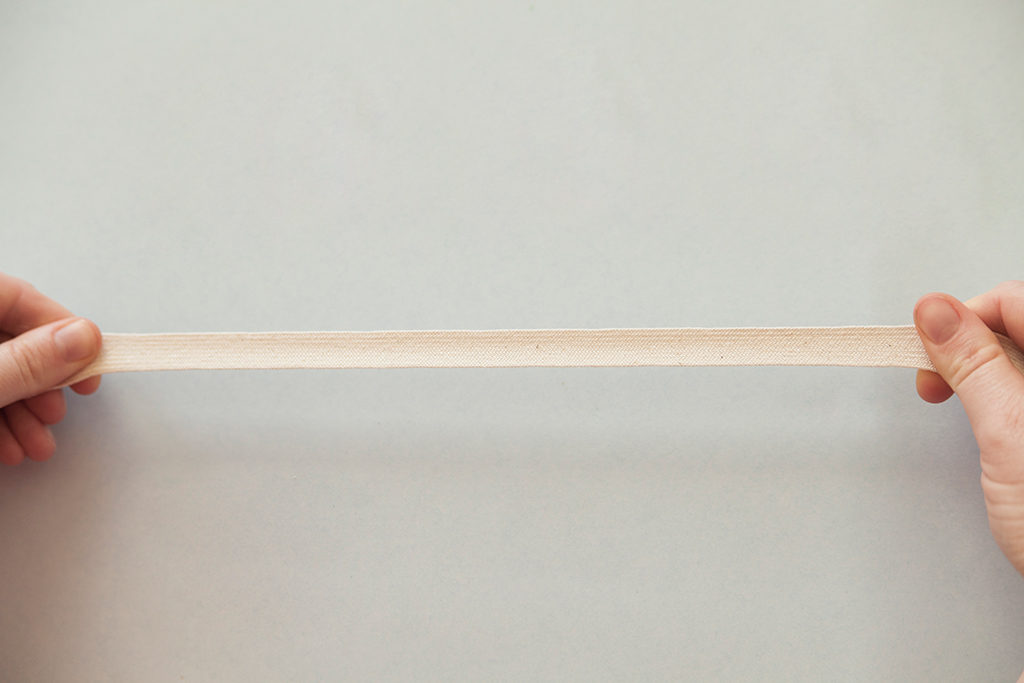
Like its close cousin, braided elastic, swim elastic becomes more narrow as it stretches.
Swim elastic is a variety of braided elastic that can withstand salt and chlorinated water. The quality that differentiates swim elastic from regular braided elastic is its fiber content. Swim elastic is typically made of a combination of cotton and rubber. Like braided elastic, swim elastic becomes more narrow as it stretches and loses stretch when it is sewn or pierced with needles and pins.
Lingerie Elastic
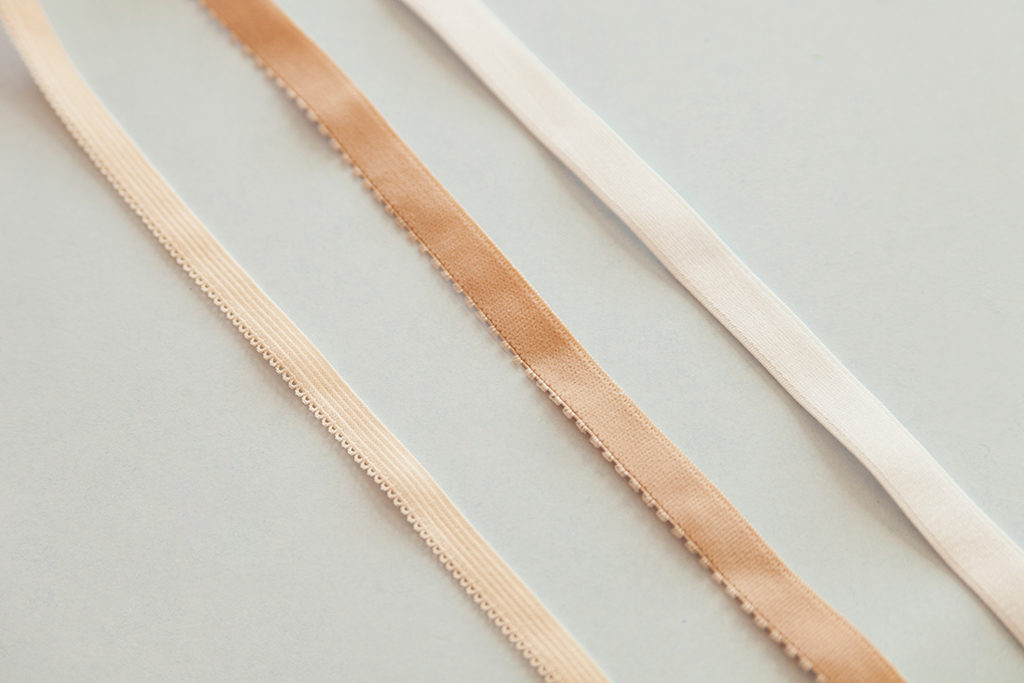
Lingerie elastic is a category of specialty elastic used specifically for lingerie. Most lingerie elastics are knit elastic and do not become more narrow as they stretch and do not lose resiliency when sewn. Lingerie elastic comes in a variety of width, colors, and finishes. Many lingerie elastics also have a plush back, making them more comfortable to wear directly against the skin.
